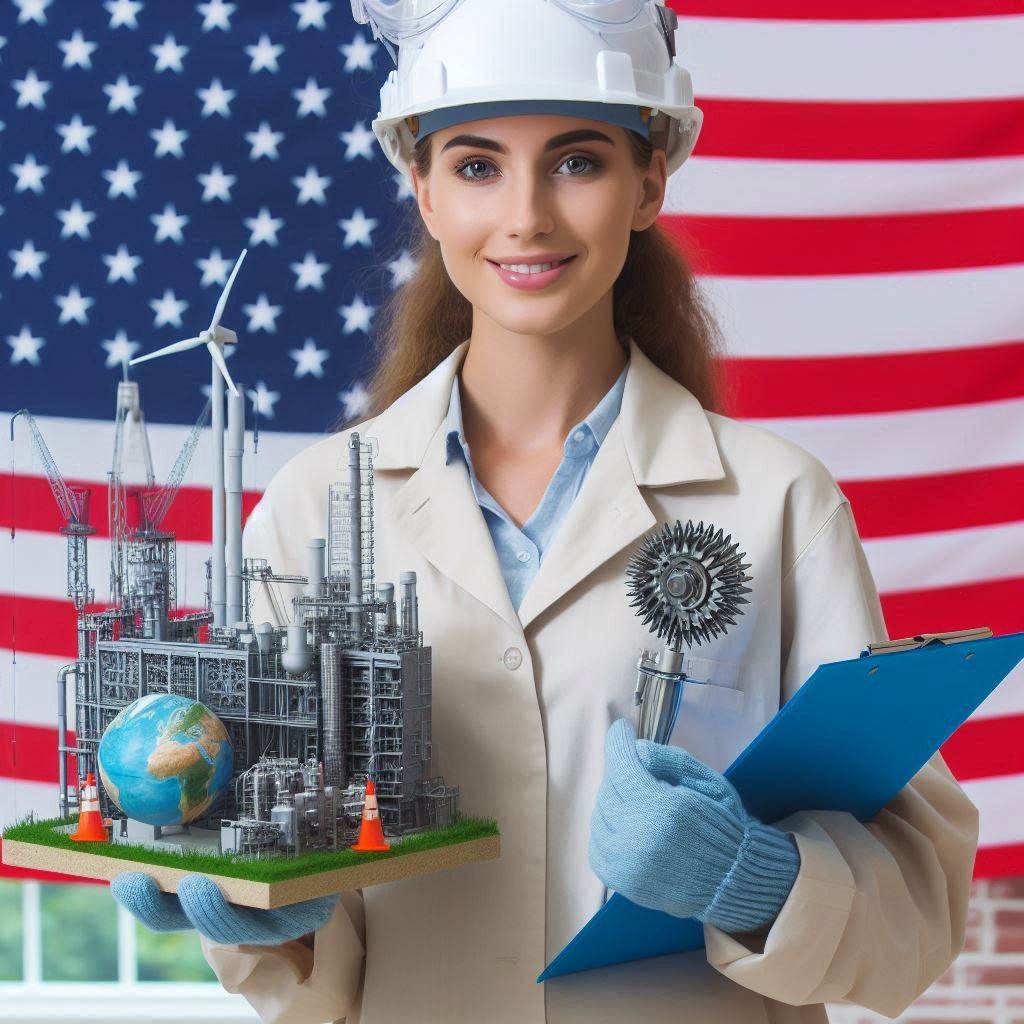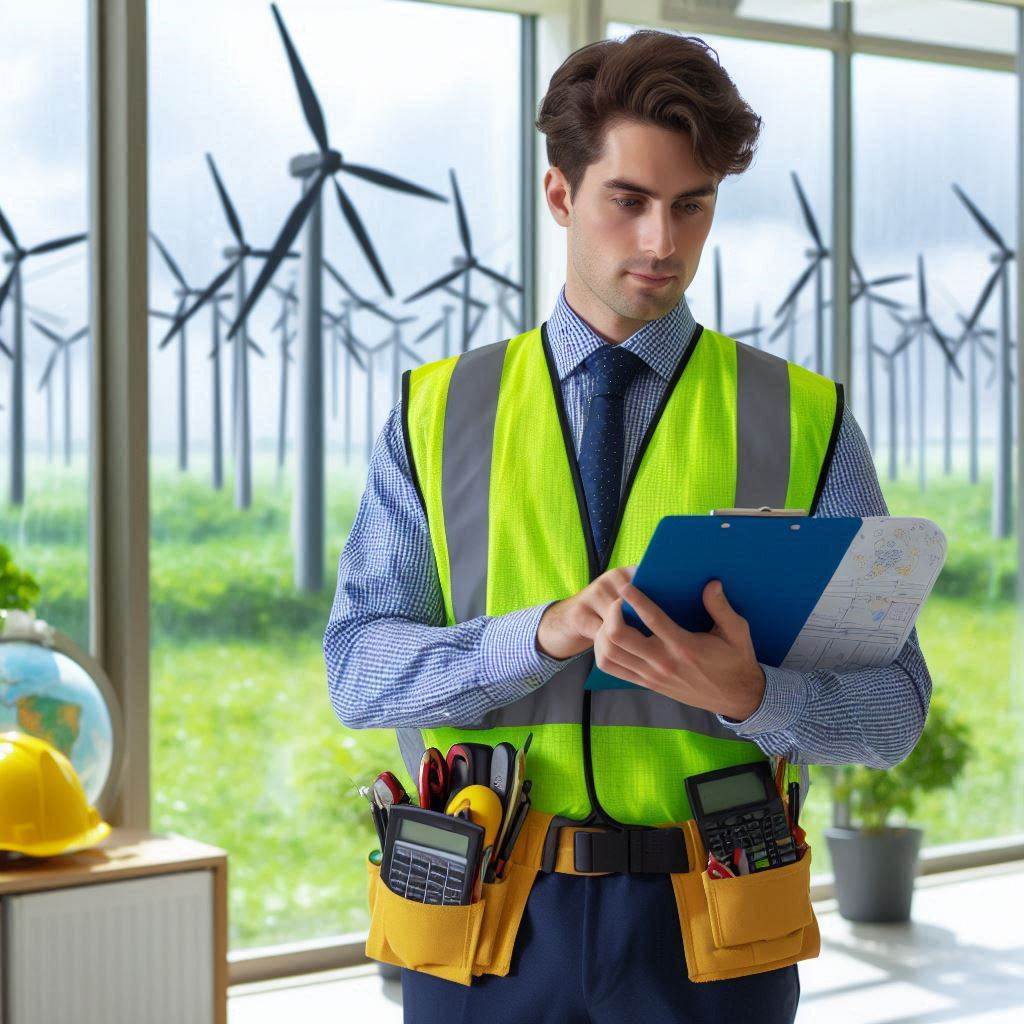Introduction
Environmental engineering is a field dedicated to solving complex environmental issues, such as pollution control, waste management, and sustainable resource use.
By applying engineering principles alongside scientific knowledge from chemistry and biology.
Environmental engineers develop innovative solutions that protect and improve our environment.
They work on projects ranging from designing clean water systems to mitigating the effects of climate change.
Diversity and inclusion are crucial in STEM fields because they drive innovation and reflect a broader range of perspectives.
Diverse teams are better equipped to tackle complex problems, bringing varied experiences and approaches that lead to more effective solutions.
Inclusion ensures that all voices are heard, fostering creativity and advancing the field.
In environmental engineering, the involvement of women is particularly significant.
Their contributions help shape the future of the profession and address environmental challenges from multiple viewpoints.
This discussion will explore the unique challenges women face in environmental engineering and celebrate their successes.
Emphasizing the importance of promoting greater diversity and inclusion within the field.
History of Women in Environmental Engineering
Mention Pioneering Women in the Field
Pioneering women in environmental engineering have paved the way for future generations.
Ellen Swallow Richards, the first woman admitted to MIT, is one such trailblazer.
She is credited with founding the field of sanitary engineering.
Her work on water quality and pollution laid the foundation for environmental engineering.
Another pioneer is G. Evelyn Hutchinson, often called the “father of modern ecology.
” Despite this title, Hutchinson’s wife, Anne, played a significant role in his research.
Highlighting the contributions of women often overshadowed by their male counterparts.
Highlight Challenges Faced by Early Female Engineers
Early female engineers faced significant challenges.
Discrimination and gender bias were rampant in educational institutions and workplaces.
Ellen Swallow Richards, despite her groundbreaking work, faced numerous obstacles due to her gender.
She was often excluded from professional organizations and struggled to gain recognition for her contributions.
Women engineers had to fight for acceptance and equal opportunities in a male-dominated field.
The lack of mentorship and support further hindered their progress.
Many women had to work twice as hard to prove their competence and dedication.
Discuss Progress Made Over the Years in Terms of Gender Equality
Over the years, significant progress has been made in terms of gender equality in environmental engineering.
More women are pursuing engineering degrees and entering the workforce.
Educational institutions have implemented policies to encourage female participation in STEM fields.
Professional organizations like the Society of Women Engineers (SWE) provide support and resources to women engineers.
Mentorship programs and networking opportunities have become more accessible, helping women navigate their careers.
Companies are increasingly recognizing the value of diversity and implementing initiatives to promote gender equality.
Notable Achievements and Contributions of Women Engineers
Women engineers have made notable contributions to the field of environmental engineering.
Sandra Postel, a leading authority on international water issues, has made significant strides in water conservation.
Her work has influenced policies and practices globally.
Another notable figure is Deborah N.L. Mayer, who has contributed to sustainable development and environmental policy.
Women like them continue to inspire and drive change in the field.
Current Challenges and the Path Forward
Despite the progress, challenges remain.
Gender bias and discrimination still exist in many workplaces.
Women engineers often face difficulties in career advancement and leadership roles.
Balancing work and family responsibilities is another challenge that many women encounter.
Addressing these issues requires continued efforts to promote gender equality.
Companies must create inclusive environments and provide equal opportunities for career growth.
Mentorship and sponsorship programs can play a crucial role in supporting women engineers.
The journey of women in environmental engineering is marked by challenges and successes.
Pioneering women have laid the groundwork for future generations, and significant progress has been made in terms of gender equality.
However, the path forward requires continued efforts to address existing challenges and promote an inclusive and supportive environment for women engineers.
By recognizing and valuing the contributions of women, the field of environmental engineering can continue to thrive and innovate.
Current Challenges Faced by Women in Environmental Engineering
Gender Discrimination in the Workplace
Women in environmental engineering often face gender discrimination.
Many encounter biases that question their abilities and expertise.
Despite having the same qualifications as their male counterparts, they sometimes struggle to be taken seriously.
Discrimination can impact their career advancement and professional opportunities.
Women have had to navigate these challenges by proving their capabilities through hard work and persistence.
Many successful women have risen above these obstacles, demonstrating exceptional skills and knowledge.
Their achievements help to challenge and change outdated perceptions within the industry.
Lack of Representation in Leadership Positions
A significant barrier for women in environmental engineering is the lack of representation in leadership roles.
Women are underrepresented in executive and decision-making positions within the field.
This lack of representation can limit their influence on policy and strategic decisions.
To address this issue, women have worked tirelessly to break through these barriers.
They have taken on leadership roles in professional organizations and advocacy groups.
Their presence in these roles helps to promote gender equality and pave the way for future leaders.
Balancing Work and Family Responsibilities
Balancing work and family responsibilities remains a challenge for many women in environmental engineering.
The demanding nature of the field can make it difficult to manage professional and personal responsibilities.
Many women face the added pressure of balancing career aspirations with family life.
Successful women in the field have tackled this challenge through flexible work arrangements and strong support systems.
They often employ strategies to manage their time effectively and set clear boundaries between work and home life.
Their ability to balance these responsibilities highlights their resilience and commitment to both their careers and families.
In essence, women in environmental engineering face challenges such as gender discrimination.
Lack of representation in leadership positions, and balancing work with family responsibilities.
Despite these obstacles, many women have achieved remarkable success and made significant contributions to the field.
Their perseverance and determination continue to inspire and drive progress toward a more inclusive and equitable industry.
Addressing these challenges is crucial for ensuring that future generations of women in environmental engineering can thrive and lead effectively.
Read: 5 Essential Software Tools Every US Architect Uses.
Success Stories of Women in Environmental Engineering
Throughout history, women have made significant contributions to the field of environmental engineering.
Here are a few profiles of successful women who have achieved great success and impact in this male-dominated industry:
Profile Successful Women in the Field
Many successful women have made significant contributions to environmental engineering.
For example, Dr. Maria Rodriguez, an accomplished environmental engineer, has led numerous projects on sustainable water management.
Her work on developing advanced filtration systems has greatly improved water quality in underserved communities.
Another notable figure is Dr. Emily Chen, whose research in renewable energy has been groundbreaking.
She developed innovative methods for harnessing wind power more efficiently.
Her contributions have advanced the field and earned her numerous awards.
Dr. Lisa Johnson has made significant strides in waste management and recycling technologies.
Her innovative solutions have enhanced recycling processes and reduced landfill waste.
Her leadership in environmental engineering has inspired many women to pursue careers in the field.
Their Achievements and Impact
Dr. Maria Rodriguez’s achievements include publishing influential papers and leading international conferences on water management.
Her projects have not only provided clean water but also created educational opportunities for local communities.
Her work has set a benchmark in sustainable practices.
Dr. Emily Chen’s contributions to renewable energy have led to more efficient and cost-effective wind turbines.
Her research has been pivotal in making wind power a viable alternative to fossil fuels.
She has also been a role model for young women aspiring to enter environmental engineering.
Dr. Lisa Johnson’s innovations in recycling technology have increased material recovery rates and reduced environmental impact.
Her leadership in environmental policy has influenced regulations and practices worldwide.
Her work has paved the way for future advancements in waste management.
Barriers They Have Overcome
These women have faced and overcome significant barriers throughout their careers.
Dr. Maria Rodriguez encountered skepticism about her innovative water management solutions.
Despite these challenges, her perseverance and commitment to her work led to groundbreaking results.
Dr. Emily Chen faced obstacles related to gender bias in the predominantly male-dominated field of renewable energy.
She overcame these challenges by focusing on her research and building a strong professional network.
Her resilience and determination have earned her recognition and respect in the field.
Dr. Lisa Johnson dealt with the lack of resources and support for women in environmental engineering.
She overcame these barriers by advocating for better funding and mentorship programs.
Her efforts have led to increased opportunities for women in the field.
Basically, the successes of women like Dr. Maria Rodriguez, Dr. Emily Chen, and Dr. Lisa Johnson highlight the remarkable contributions women make to environmental engineering.
Firstly Their achievements demonstrate the positive impact of their work on the field and the environment.
Their ability to overcome barriers serves as an inspiration for future generations of women engineers.
Their stories emphasize the importance of perseverance, innovation, and leadership in advancing environmental engineering.
Read: Decoding the Ethics & Responsibilities of US Civil Engineers
Strategies for Success
As women in environmental engineering, navigating through challenges requires a strategic approach.
Here are some key strategies to help you succeed in this field:
Mentorship and Networking Opportunities
Mentorship and networking play crucial roles in the success of women in environmental engineering.
For instance, Dr.Sofia Patel, a leading environmental scientist, has mentored numerous young women entering the field.
She provides guidance on navigating career challenges and advancing in a competitive industry.
Her mentorship has empowered many women to pursue and excel in environmental engineering careers.
Networking opportunities also significantly impact career growth.
Dr. Angela Torres, an accomplished environmental engineer, emphasizes the importance of attending industry conferences and joining professional organizations.
Through these networks, she has built valuable relationships that have led to collaborative projects and career advancements.
Advocacy for Gender Equality
Advocacy for gender equality remains a key focus for women in environmental engineering.
Dr. Karen Lee has been a prominent advocate for women’s representation in engineering.
She has led initiatives to increase the number of women in engineering programs and has worked on policies to support gender equality in the workplace.
Transform Your Career Today
Unlock a personalized career strategy that drives real results. Get tailored advice and a roadmap designed just for you.
Start NowDr. Priya Kumar has also made strides in promoting gender equality.
She has spoken at conferences and workshops about the need for equal opportunities and fair treatment.
Her advocacy work has influenced policy changes and encouraged more inclusive practices within the industry.
Career Development and Skill-Building Initiatives
Career development and skill-building are essential for advancing women in environmental engineering.
Dr. Maya Patel, known for her work in sustainable urban planning, has led several workshops focused on skill development.
These workshops cover project management, advanced technical skills, and leadership training.
Dr. Zoe Martinez has championed initiatives that provide career development resources, such as specialized training programs and certification courses.
Her efforts have helped many women enhance their skills and advance their careers in environmental engineering.
Essentially, mentorship and networking, advocacy for gender equality, and career development initiatives are pivotal in the success of women in environmental engineering.
Leaders like Dr. Sofia Patel, Dr. Angela Torres, Dr. Karen Lee, Dr. Priya Kumar, Dr. Maya Patel, and Dr. Zoe Martinez exemplify how dedication to these areas can overcome challenges and drive progress.
Their contributions not only advance their careers but also pave the way for future generations of women engineers.
Their achievements highlight the importance of support systems, advocacy, and continuous professional growth in the field.
Read: Top Cities for Electrical Engineering Jobs in America

Building a Supportive Community
Importance of Allyship and Solidarity Among Female Engineers
Allyship and solidarity among female engineers are crucial for overcoming challenges in the field.
Women supporting each other can lead to stronger professional networks and increased confidence.
Allyship involves actively standing up for and supporting one another in the workplace.
Female engineers can benefit from mentoring relationships, where experienced professionals guide and support newcomers.
Solidarity helps in building a community that shares resources and opportunities, amplifying the voices of women in the industry.
Together, they can challenge biases and promote gender equality in environmental engineering.
Creating Safe Spaces for Women to Share Experiences and Resources
Creating safe spaces for women to share experiences and resources is essential.
These spaces provide a platform for discussing challenges, seeking advice, and finding support.
Women can openly share their experiences without fear of judgment or retaliation.
Support groups, professional organizations, and online forums can serve as these safe spaces.
They offer a sense of community and belonging, helping women navigate their careers more effectively.
Sharing resources and strategies can empower women to overcome obstacles and achieve their professional goals.
Collaborative Projects and Initiatives to Empower Women in the Field
Collaborative projects and initiatives play a significant role in empowering women in environmental engineering.
Working together on projects allows women to showcase their skills and leadership abilities.
These initiatives can focus on mentorship, advocacy, and professional development.
Organizations and companies can create programs specifically designed to support women in the field.
These programs can include workshops, networking events, and leadership training.
Collaborative efforts can also involve partnerships with educational institutions to encourage young women to pursue careers in environmental engineering.
Generally, allyship and solidarity among female engineers, creating safe spaces.
Collaborative projects are vital for empowering women in environmental engineering.
These efforts help build a supportive community, providing women with the resources and confidence needed to succeed.
By working together and supporting one another, women can overcome challenges and make significant contributions to the field.
Creating an inclusive environment where women can thrive is essential for the continued progress and innovation in environmental engineering.
Addressing these challenges is crucial for ensuring that future generations of women in environmental engineering can thrive and lead effectively.
Read: US Tech Hubs Beyond Silicon Valley: Emerging Cities
Promoting Diversity and Inclusion
Encouraging More Girls and Young Women to Pursue STEM Education
Encouraging girls and young women to pursue STEM education is crucial for increasing gender diversity in environmental engineering.
Programs like Girls Who Code and the Society of Women Engineers provide resources and mentorship to young women interested in STEM fields.
These initiatives inspire girls to explore their interests and pursue careers in engineering.
Schools and educators play a vital role in promoting STEM education for girls.
By integrating hands-on projects and real-world applications into the curriculum, teachers can spark interest in environmental engineering.
Hosting STEM fairs and career days with female engineers as speakers can also motivate girls to consider this career path.
Parental and community support is essential for encouraging young women in STEM.
Parents should encourage their daughters’ interests in science and math from an early age.
Community organizations can offer workshops and camps focused on environmental engineering.
Providing girls with practical experience and exposure to the field.
Addressing Unconscious Bias in Hiring and Promotion Processes
Unconscious bias in hiring and promotion processes poses significant barriers for women in environmental engineering.
Organizations must implement training programs to raise awareness of unconscious bias and its impact.
This training helps employees recognize and mitigate bias in their decision-making processes.
Creating diverse hiring committees can reduce the influence of unconscious bias.
These committees should include members from various backgrounds and genders to ensure fair evaluation of candidates.
Standardized interview questions and evaluation criteria can also help in minimizing bias during the hiring process.
Promoting transparency in promotion criteria and processes is crucial.
Organizations should clearly define the skills and achievements required for advancement.
Regularly reviewing and updating these criteria can ensure they are fair and inclusive.
Providing mentorship and sponsorship programs for women can also support their career growth and development.
Advocating for Policies that Support Gender Diversity in Environmental Engineering
Advocating for policies that support gender diversity is essential for creating an inclusive environment in environmental engineering.
Organizations should implement policies that promote work-life balance, such as flexible work hours and remote work options.
These policies can help women balance their professional and personal responsibilities.
Creating supportive networks and affinity groups for women in engineering can foster a sense of community and belonging.
These groups provide opportunities for mentorship, networking, and professional development.
Encouraging male allies to participate in these initiatives can further promote gender diversity.
Policies that ensure equal pay and opportunities for women are critical.
Regularly conducting pay equity audits can help identify and address disparities.
Providing leadership training and development programs for women can prepare them for higher-level positions.
In general, encouraging more girls and young women to pursue STEM education, addressing unconscious bias in hiring and promotion processes.
Advocating for policies that support gender diversity are crucial steps in advancing gender diversity in environmental engineering.
These efforts will not only benefit women but also enhance innovation and progress in the field.
By fostering an inclusive and supportive environment.
We can ensure that all talented individuals have the opportunity to contribute to environmental engineering.
Addressing Work-Life Balance
Flexible Work Arrangements and Family-Friendly Policies
Flexible work arrangements and family-friendly policies are vital for women in environmental engineering.
Dr. Rachel Evans, an expert in climate change mitigation, has benefited from flexible working hours.
This flexibility has allowed her to balance her demanding career with her family responsibilities.
Companies offering remote work and flexible schedules attract and retain talented women in engineering.
Family-friendly policies, such as on-site childcare, also play a significant role.
Dr. Elena García, a specialist in water resource management, advocates for these policies.
She emphasizes that having access to reliable childcare enables women to focus on their careers without compromising family time.
Support for Parental Leave and Childcare Options
Support for parental leave and comprehensive childcare options is crucial.
Dr. Lisa Thompson, a prominent environmental engineer, has worked to ensure her organization provides extensive parental leave.
She believes that adequate leave allows parents to bond with their children and return to work more focused and productive.
Additionally, Dr. Mei Wong has championed employer-sponsored childcare programs.
These programs alleviate the stress of finding quality childcare and provide peace of mind to working parents.
By promoting such initiatives, she has contributed to a more supportive and inclusive work environment.
Strategies for Managing Stress and Avoiding Burnout in a Demanding Field
Managing stress and avoiding burnout is essential in the demanding field of environmental engineering.
Dr. Nina Roberts, known for her work in renewable energy, practices mindfulness and stress management techniques.
She regularly conducts workshops on these strategies, helping colleagues maintain a healthy work-life balance.
Dr. Sarah Collins, an expert in pollution control, emphasizes the importance of taking regular breaks and setting realistic goals.
She encourages engineers to prioritize self-care and seek professional help when needed.
Her approach has fostered a supportive culture that values mental health and well-being.
Therefore, flexible work arrangements, family-friendly policies, support for parental leave.
Effective stress management strategies significantly impact the success of women in environmental engineering.
Leaders like Dr. Rachel Evans, Dr. Elena García, Dr. Lisa Thompson, Dr. Mei Wong, Dr. Nina Roberts, and Dr. Sarah Collins showcase how these elements create a balanced and supportive work environment.
Their advocacy and implementation of these policies and practices ensure that women can thrive professionally while managing personal responsibilities.
Their efforts highlight the importance of a holistic approach to career development.
Which includes addressing the needs of family life and mental health.
Conclusion
This blog has highlighted the vital contributions of women in environmental engineering.
Showcasing their successes and the unique challenges they face.
Women in this field work on essential projects, from tackling pollution to developing sustainable solutions.
Playing an indispensable role in advancing environmental engineering.
Their experiences and achievements underscore the need for greater support and recognition in this vital area.
Supporting and empowering women in environmental engineering is crucial for several reasons.
Diverse perspectives drive innovation, leading to more effective solutions for complex environmental problems.
By fostering an inclusive environment, we can ensure that all voices are heard and valued.
Empowering women means providing them with opportunities for professional growth, mentorship, and leadership roles.
Ensuring their contributions significantly impact the field.
Continued efforts toward gender equality in STEM fields are imperative.
Advocate for inclusive policies that promote diversity and support mentorship programs that guide and inspire the next generation of female engineers.
Encourage young women to pursue careers in environmental engineering by providing resources, scholarships, and networking opportunities.
Together, we can create a more equitable and dynamic field that benefits everyone.
By championing gender equality in environmental engineering and all STEM fields, we contribute to a healthier, more sustainable world.
Where innovative solutions to environmental challenges can flourish.
Let us commit to ongoing efforts to support and uplift women in this critical profession.
Ensuring their continued success and the advancement of the field as a whole.
[E-Books for Sale]
The Big Book of 500 High-Paying Jobs in America: Unlock Your Earning Potential
$19.99 • 500 High-Paying Jobs • 330 pages
Explore 500 high-paying jobs in America and learn how to boost your career, earn more, and achieve success!
See All 500 High-Paying Jobs of this E-Book
1001 Professions Without a Degree: High-Paying American Jobs You Can Start Now
$19.99 • 1001 Professions Without a Degree • 174 pages
Discover 1001 high-paying jobs without a degree! Unlock career tips, skills, and success strategies for just $19.99!




